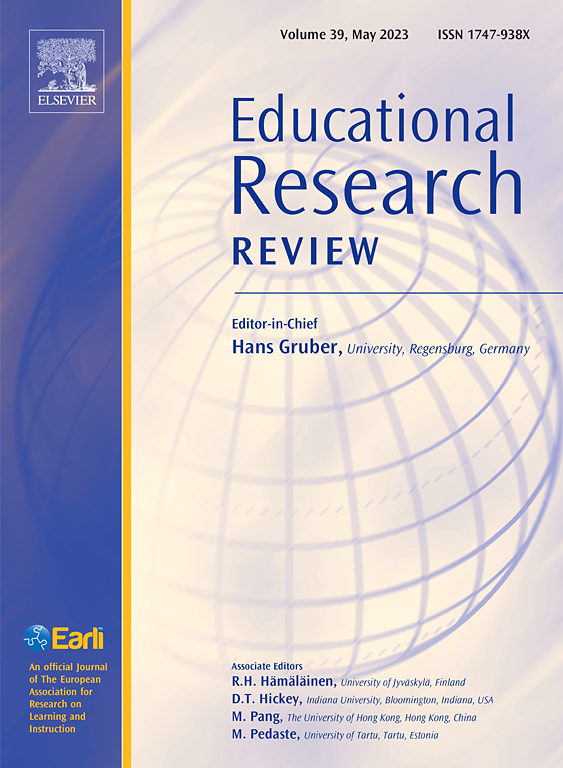Features of digital media which influence social interactions between adults and children aged 2–7 years during joint media engagement: A multi-level meta-analysis
IF 10.6
1区 教育学
Q1 EDUCATION & EDUCATIONAL RESEARCH
引用次数: 0
Abstract
This study reviewed research on the features of digital media (e.g. apps, e-books) which influence interactions between adults and children aged 2–7 years when using these media together. We focused on interactions which support child learning, particularly oral language development. We used robust variance estimation to conduct multilevel meta-analyses of 15 experimental studies (n = 627 parent–child pairs; k = 190 effects). Findings suggest that digital design can shape adult-child interactions (g = 0.56, k = 170), particularly the quality of parental language input (g = 1.1, k = 86). Embedding conversation prompts into e-books showed particular promise (g = 0.84–0.99, k = 58–74). Though small in scope, this study offers direction for media design and research and indicates promise for low-cost intervention via digital design. However, it also indicates a need for more robust and well-powered research to inform design, practice and policy. In particular, better evidence is needed to establish whether the benefits identified for adult-child interaction translate into benefits for wider child and adult outcomes.
数字媒体特征对2-7岁成人与儿童在联合媒体参与中社会互动的影响:一项多层次元分析
本研究回顾了数字媒体(如应用程序、电子书)的特征,这些特征会影响2-7岁儿童在一起使用这些媒体时的互动。我们专注于支持儿童学习的互动,特别是口语的发展。我们采用稳健方差估计对15项实验研究(n = 627对亲子对;K = 190效应)。研究结果表明,数字设计可以塑造成人与儿童的互动(g = 0.56, k = 170),特别是父母语言输入的质量(g = 1.1, k = 86)。在电子书中嵌入对话提示显示出特别的前景(g = 0.84-0.99, k = 58-74)。虽然本研究范围小,但为媒体设计和研究提供了方向,并表明了通过数字设计进行低成本干预的希望。然而,这也表明需要更有力的研究来为设计、实践和政策提供信息。特别是,需要更好的证据来确定成人-儿童互动的益处是否转化为更广泛的儿童和成人结果的益处。
本文章由计算机程序翻译,如有差异,请以英文原文为准。
求助全文
约1分钟内获得全文
求助全文
来源期刊

Educational Research Review
EDUCATION & EDUCATIONAL RESEARCH-
CiteScore
19.40
自引率
0.90%
发文量
53
审稿时长
57 days
期刊介绍:
Educational Research Review is an international journal catering to researchers and diverse agencies keen on reviewing studies and theoretical papers in education at any level. The journal welcomes high-quality articles that address educational research problems through a review approach, encompassing thematic or methodological reviews and meta-analyses. With an inclusive scope, the journal does not limit itself to any specific age range and invites articles across various settings where learning and education take place, such as schools, corporate training, and both formal and informal educational environments.
 求助内容:
求助内容: 应助结果提醒方式:
应助结果提醒方式:


